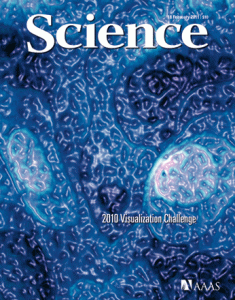Patients with Spinal Cord Injury may benefit from treatment with Taxanes
Taxanes are a class of drug that are used in breast, lung and ovarian cancer chemotherapy to disrupt the function of microtubules that are essential to cell division. They include paclitaxel (Taxol®) and docetaxel (Taxotere®).
Paclitaxel is also used to prevent the narrowing (restenosis) that occurs with coronary artery stents that are used to open blocked coronary arteries. Drug coated stents (a.k.a. “drug-eluting stents) reduce scar tissue.
 Research published in the February 18, 2011 edition of Science, by Farida Hellal and colleagues has now shown that treatment with paclitaxel reduces the scarring associated with spinal cord injury (SCI) and promotes nerve regeneration.
Research published in the February 18, 2011 edition of Science, by Farida Hellal and colleagues has now shown that treatment with paclitaxel reduces the scarring associated with spinal cord injury (SCI) and promotes nerve regeneration.
The paper in Science is well worth reading and takes the reader through a logical thought process as the researchers tested their hypothesis that paclitaxel might stabilize microtubules around the site of SCI.
One of the cellular events that occurs after SCI is the activation of transforming growth factor-ß signaling (TGF-ß).
Increased TGF-ß leads to fibrosis or scarring. TGF-ß acts on Smad2 to bind to microtubules through kinesin-1. Hellal and colleagues asked if treatment with paclitaxel would impair Smad-dependent TGF-ß signaling? The answer from their elegant series of experiments is that yes it does.
Not only that, but TGF-ß also regulates the axon growth inhibitor, chondroitin sulfate proteoglycans (CSPGs). The researchers asked whether pacllitaxel decreased CSPGs after SCI? They found that cultured meningeal cells and astrocytes treated with 10 nM paclitaxel showed a 35% and 32% decrease of glycosaminoglycan (GAG) levels.
The next logical question is whether the reduction of scar formation by paclitaxel results in any benefits for new nerve formation? The regeneration of dorsal root ganglions (DRG) were evaluated. In what to me was a finding of great significance, the researchers found (references to figures omitted) that:
“Taxol-treated animals had regenerative fibers growing along the edge of the lesion cavity into the injury site and beyond. The longest axons per animal grew 1199 T 250 mm in the Taxol-treated group versus 176 T 225 mm in the vehicle-treated an- imals (n = 13 animals per group; P = 0.002; two- tailed t-test). The Taxol-treated lesion site thus becomes favorable for regeneration of growth-competent axons.”
The final part of this research asked whether treatment with paclitaxel led to any functional improvement after the test animals received a spinal cord injury? They found that those rats that received paclitaxel after injury, had greater improvement in their locomotor function. The conclusion being that “Taxol-induced functional recovery correlates with its axon growth–inducing effect.”
The results from any animal study must be viewed with caution, since they don’t necessarily translate to humans. However, this animal research, if supported by data from human clinical trials, suggests that treatment with taxanes may be of benefit to those with spinal cord injuries.
Given the debilitating effect of any spinal cord injury, this is an important finding.
![]() Hellal, F., Hurtado, A., Ruschel, J., Flynn, K., Laskowski, C., Umlauf, M., Kapitein, L., Strikis, D., Lemmon, V., Bixby, J., Hoogenraad, C., & Bradke, F. (2011). Microtubule Stabilization Reduces Scarring and Causes Axon Regeneration After Spinal Cord Injury Science, 331 (6019), 928-931 DOI: 10.1126/science.1201148
Hellal, F., Hurtado, A., Ruschel, J., Flynn, K., Laskowski, C., Umlauf, M., Kapitein, L., Strikis, D., Lemmon, V., Bixby, J., Hoogenraad, C., & Bradke, F. (2011). Microtubule Stabilization Reduces Scarring and Causes Axon Regeneration After Spinal Cord Injury Science, 331 (6019), 928-931 DOI: 10.1126/science.1201148